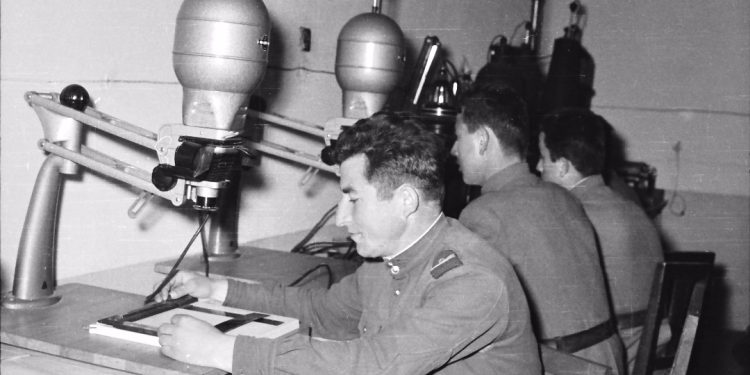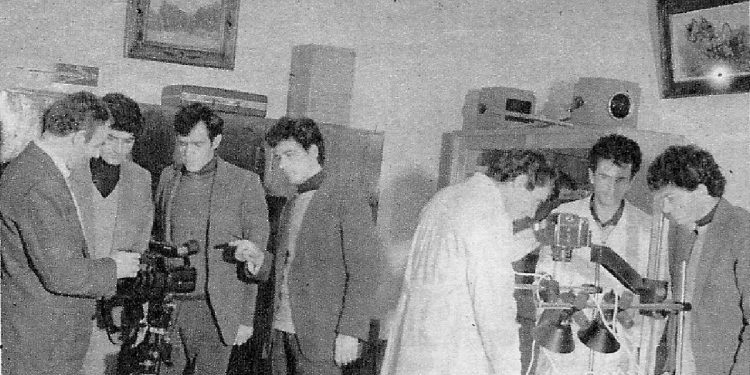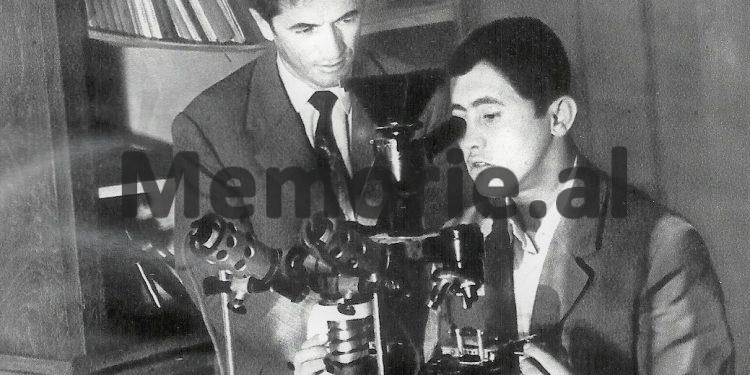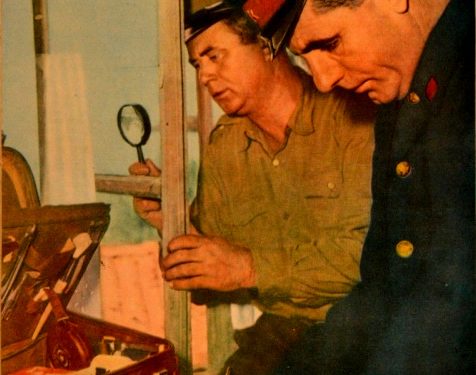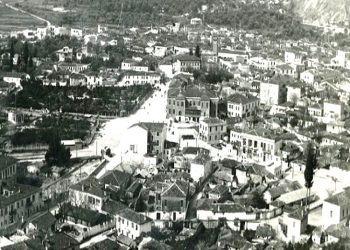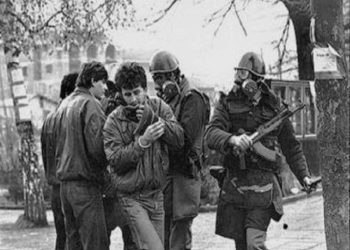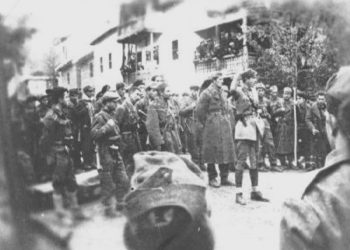By Prof. Dr. Bardhyl Çipi
Part twelve
Prof. Çipi: “I recount the cases when I was called to perform forensic examinations on people killed at the border, in an attempt to escape from Albania!”
SCIENTIFIC EVIDENCE OF IMPRESSIVE DEATHS
(Public figures, victims of dictatorship, and other events)
Memorie.al / Bardhyl Çipi, one of the most experienced specialists in our country in the field of Forensic Medicine and Bioethics, their teaching, and the training of new forensic experts. Some of his cases include: victims killed at the border while trying to escape the communist dictatorship, one whose hidden corpse was discovered with the help of his loyal dog, the interned woman who killed herself out of despair, citizens of Kosovo killed by Serbs for seeking to live free and avoid humiliation and torture, residents who lived in Albania 1,500 years ago, a robbed and murdered professor from the University of Tirana, etc. A book about death and scientific evidence for uncovering its various types: murder, suicide, those stimulated and coerced by the communist regime, murders and genocide against Albanians by their neighbors, fresh or decomposed and skeletal remains. Documents on the deaths of prominent figures: Kennedy, Lincoln, Napoleon, Lenin, Trotsky, etc., and other events involving the deaths of ordinary people. Knowledge about post-mortem changes and the examination of corpses worldwide and in our country, from a historical, ethical, forensic, and legal perspective. Some of his latest books are: “Forensic Medicine Manual” (2015), “Bioethics in Albania nowadays” (2016), “Albanian Transition under the Magnifying Glass of Forensic Medicine” (2018), “Forensic Medicine Criminology” (2020).
Continued from the previous issue
Anthology of Forensic Examinations of Corpses from Various Events in Our Country
Four Cases of Deaths from Several Types of Mechanical Asphyxia, Examined by Dr. Spiro Çipi
- The Case of Simulated Hanging After Family Intervention (1960s)
In the 1960s, in village K. of district T., citizen L.K. was found to have hanged herself. Although police were immediately notified and ordered to preserve the crime scene, the investigative team, upon arrival, found that the characteristics of the strangulation furrow on the vertically hanging body did not match the knot’s position. The discontinuous area of the furrow was on the lateral and right side of the neck, while the knot was at the back.
The family initially denied moving the body, but the elderly man of the house explained: “Forgive me, but I understand the cause of your concern. The family members, out of shame, because the victim was hanging in an exposed place, removed the noose and laid the body down. When the order came that the crime scene should not be touched, they put the body back in its initial vertical hanging position.” This was corroborated by the fact that post-mortem lividity (livor mortis) had begun to form on the shoulders (from the prior lying position), in addition to the lower limbs (from the current vertical position).
- The Case of Ligature Strangulation Masked as Suicide by Hanging (Durrës, 1960s)
In the city of Durrës in the 1960s, a woman who had separated from her husband was strangled by him. The ex-husband frequently visited her home and beat her. One day, finding her alone, he put a noose around her neck and strangled her. To conceal the murder, he simulated hanging the victim in the apartment bathroom.
The initial examination of the corpse noted the oblique strangulation furrow of hanging, leading to the assumption that the woman had committed suicide by hanging out of despair. However, initial investigative data, based on a resident’s testimony, indicated that the ex-husband had been at the woman’s home just before the incident. A more careful second inspection of the corpse revealed that in addition to the hanging furrow, there was another, less distinct, horizontal furrow, characteristic of ligature strangulation. Faced with this fact, the ex-husband was forced to confess to the crime.
- The Accidental Strangulation of a Child Following a Scalding (Domje, 1960s)
In the village of Domje, Kashar (Tirana district), in the 1960s, a woman returning from work found her 4-year-old daughter dead on a nearby hill.
The examination of the corpse revealed a complete, circular strangulation furrow on the neck (ligature strangulation). Also, on one lower limb, from the thigh down, there was an irregular, first- and second-degree burn with blisters, similar to a scalding injury. This was clearly a case of murder by strangulation. Initial suspicion fell on a neighbor with a bad “political biography” who was not on good terms with the family.
However, the elderly mother-in-law was later questioned and eventually confessed the truth: The child had accidentally knocked over a churn of hot water and was scalded, causing her to cry hysterically. The mother-in-law, to silence the child because she was afraid of the other family members who treated her poorly, tightened the beads the girl was wearing around her neck and accidentally strangled her (ligature strangulation).
- Manual Strangulation Confirmed by Injuries on the Victim’s Neck and the Wife’s Forehead (Berat, 1960s)
In Berat in the 1960s, an elderly man was found dead in his home. His death was deemed suspicious because injuries in the form of scratches and ecchymoses (bruises), similar to those of manual strangulation, were noted on the victim’s neck, along with a faint horizontal strangulation furrow (attempted ligature strangulation).
This all pointed to a murder, suspected to have been committed by his much younger wife, with whom the victim constantly fought. In the post-incident examination of the victim’s wife, a fresh ecchymosis was discovered on her forehead after her headscarf was removed, a sign of the struggle with her husband during the strangulation. She confessed to the crime.
Anthology of Accidental Asphyxia and Poisoning Cases
The Case of a Child’s Asphyxiation by a Bean Seed (2006)
This case concerns the death of a 1-year-old child on May 5, 2006, hospitalized in Korçë. The autopsy revealed a bean seed in the child’s trachea (windpipe), accompanied by signs of asphyctic death. This was an accidental asphyxia death caused by a foreign body (the bean seed).
The parents reported the case to the prosecutor, alleging medical negligence. The Institute of Forensic Medicine (IML) was asked to review the case. The clinical file included an X-ray taken shortly after hospitalization. Consulting with a radiologist, it was determined that the right lung was fully collapsed (atelectasis) due to the blockage of the main right bronchus, which clearly indicated the presence of a foreign body days earlier.
Due to medical negligence, the complete collapse of the right lung was not correctly attributed to a foreign body, and the child was mistakenly treated for pneumonia. Due to this oversight, on the third day of hospitalization, the foreign body (the bean seed) moved from the bronchus to the trachea, causing complete blockage of the airway and immediate death. The court, relying primarily on the forensic expertise, convicted the doctors responsible for this severe negligence.
Cocaine Poisoning (2008)
In January 2008, two adults collapsed and lost consciousness immediately after starting to drink wine at a seaside restaurant. Both victims died shortly after exhibiting convulsions (“cocaine epilepsy”).
Initial suspicions pointed to food poisoning. However, toxicological examination of the wine bottle revealed an extremely high concentration of cocaine. The autopsies confirmed that the deaths were due to cocaine poisoning, followed by asphyctic death and strong pre-mortem convulsions.
The deaths were deemed accidental, caused by drinking cocaine-laced wine that had been prepared outside Albania for trafficking, sent by mail, and gifted to the victim (a postal driver) by a colleague. This event revealed a case of cocaine trafficking concealed within wine, which was exposed through forensic examination.
Fatal Poisoning with Selinon (Dinitrocresol) (1985)
In Fushë Krujë, on March 14, 1985, a family (a mother, three daughters, and a 4-year-old nephew) applied a yellow, oil-dissolved substance to their bodies to treat scabies, mistakenly believing it to be a sulfur-based medication. The substance was actually Selinon (or Dinitrocresol), an agricultural insecticide.
The next morning, the child and one daughter began complaining of severe symptoms, including headaches, difficulty breathing, vomiting, and profuse sweating. Despite medical assistance, one daughter and the child died within 1.5 hours.
Autopsy noted a yellowing of the skin and signs of scabies. Toxicological examination confirmed the presence of Selinon in high quantities in the internal organs. The medical records of the victims, who had very high temperatures (over ∘C), corroborated the clinical picture of Selinon poisoning. The common circumstances and the toxicological results clearly demonstrated poisoning with Selinon, which is known to accumulate in the body, a property that proved fatal in this instance.
Death from Poisoning with Wild Hemlock (1981)
In a village in the Gjirokastër district, on April 9, 1981, a middle-aged man died at home. Earlier that day, he, his wife, son, and daughter-in-law had eaten shapkat (a type of pie/turnover) made with wheat flour and a type of vegetable called “çerepujkë.”
Half an hour after the meal, all family members began experiencing headaches, dizziness, vision darkening, nausea, vomiting, and physical weakness. The man died at 5:00 PM.
Autopsy findings included swelling of the brain, venous stasis, and a stomach filled with vegetable matter. The circumstances indicated an accidental poisoning from a toxic substance consumed during lunch. The meal was confirmed to have been mixed with the poisonous plant wild hemlock (Conium maculatum), mistakenly gathered instead of the edible variety.
Toxicological examination of the victim’s organs found the presence of coniine, the toxic alkaloid of the plant, which acts by paralyzing the motor endings of the muscles while preserving brain function. This matched the testimony of the surviving wife, who described her own weakness: “I felt so weak that I couldn’t even get up to help my husband, who was dying, lying on the other bed.”/Memorie.al




